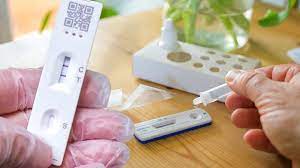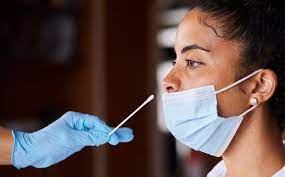How to Prepare for a COVID-19 Test: What to Expect
COVID-19 testing is a critical part of the public health response to the coronavirus pandemic. Secretions are collected from the nose or mouth and tested for the SARS-CoV-2 virus. It helps to identify those who have been infected so they can receive appropriate care, as well as to limit the spread of COVID-19 by isolating and containing those who are infected. Tests come in various forms, including antigen tests, that detect viral proteins in nose or throat swabs; PCR tests, which use genetic material to detect active infections; and antibody tests, which look for evidence of past infection. Access and accuracy vary widely across countries and regions. Having accurate testing available quickly is key to controlling this global health crisis. Please keep reading for details on the following topics:
Types of COVID tests
Indications for a COVID test
Symptoms of COVID-19
How a COVID test is done
PCR
Antigen test
When to seek urgent medical care

TYPES OF COVID 19 TESTS
Rapid antigen tests- Test conducted on the site and results obtained within 15 minutes
Laboratory tests (PCR)- Test conducted on the site and samples sent to a lab for processing. Results obtained within 24 to 48 hours
ANTIBODY TEST
An antibody test is a laboratory method used to detect the presence of antibodies in a person’s blood. It can be used to detect both current and past infections with viruses such as the coronavirus. Antibody tests are used to measure the body’s immune response to an infection and can give doctors information about a person’s level of immunity.
Uses a blood sample to detect the presence of antibodies to SARS-CoV-2
Antibodies help the body fight infections to prevent persons from getting ill in the future, they indicate whether one has a previous infection.
REASONS FOR TAKING A COVID TEST
Having COVID-19 symptoms
Was in close proximity to a confirmed or suspected case of COVID 19
For schools or work purposes
Before and after travel
COVID-19
COVID-19, caused by a novel Coronavirus (SARS-CoV-2), is an infectious disease that originated in Wuhan City, China in late 2019 and quickly spread worldwide. It is highly contagious and is primarily spread through droplets expelled when an infected person coughs or sneezes. The virus typically causes mild to severe respiratory symptoms such as fever, coughing and fatigue that may require hospitalization and even lead to death in some cases. There are two types of tests available for diagnosing COVID-19: molecular tests that detect genetic material from the virus by amplifying it with PCR technology; and antigen tests which look for specific antigens associated with SARS-CoV-2 on a sample taken from the patient’s nose or throat using advanced immunoassay technology.
SYMPTOMS OF COVID-19
Temperature over 100 degrees Fahrenheit or 38 degrees Celsius
Cough
Trouble breathing
Weakness
Tiredness
Pain to the muscle or body
Pain to the head
Inability to smell or taste
Soreness to the throat
Stuffy nose
Nausea or vomiting
PCR
Polymerase Chain Reaction (PCR) is a molecular technique used to amplify and amplify DNA fragments. It is a powerful tool used in modern molecular diagnostics and research, as it allows researchers to quickly make millions of copies of DNA segments from small starting amounts. PCR amplifies genes which are important for diagnosing genetic diseases, identifying bacteria or viruses that cause infection and detecting mutations associated with cancer. The PCR test is also used to detect the presence of genetic material in forensic evidence and in the medical laboratory to diagnose various infectious diseases. This test provides greater accuracy compared to other detection methods such as cultures or serological tests.
HOW A SWAB IS TAKEN FOR A PCR TEST
A swab will be introduced into the nose by a health care professional
The swab will be rotated enough to collect nasal secretions then removed
The swab will be placed inside a tube and sealed
The tube will be labeled and placed in a sealed bag
The specimen will be transported to a lab for testing
A form containing details of the patient and the type of test to be conducted will also accompany the specimen

HOW TO PERFORM A COVID 19 TEST AT HOME
Make sure the test purchased has been authorized by the FDA
Ensure that the test has not expired
Wash and dry the hands
Follow the instructions that accompanied the test
If the results are positive, seek medical care advice
ANTIGEN TEST
An antigen test looks for specific proteins, or antigens, that are associated with a virus or bacteria. By detecting these antigens, known as markers, it is possible to determine if someone has an active infection with the virus or bacteria. This type of testing is often used for the rapid diagnosis of infectious diseases like COVID-19.
HOW THE RAPID COVID 19 ANTIGEN TEST IS DONE
A swab will be introduced into the nose and rotated to collect a sample of the nasal secretions and then removed
The swab will be placed into an extraction tube containing a solution,
The swab will be rotated, pressed so that the mucus can be absorbed into the solution
The swab will be removed disposed (according to the policy of the institution)
A few drops of the sample will be placed on a to a testing kit
The result will be read within 15 to 20 minutes
A positive result will contain 2 visible lines
A negative result will contain 1 visible line next to the control section
An invalid test will contain 0 lines
ADVANTAGES OF THE COVID 19 RAPID ANTIGEN TEST
The cost is inexpensive
Results are quick
No special training is required to do the test
One is not required to have the test done in a lab, since it can be done at home
DISADVANTAGES OF THE COVID 19 RAPID ANTIGEN TEST
Additional testing will be required, if the results are positive
Results may not be accurate (patient may show clinical symptoms of covid-19 with a negative result)
The test may produce false positive results
WHAT HAPPENS IF THE RESULTS COME OUT POSITIVE
The person will be placed in isolation for about 5 to 10 days
The test will be repeated to confirm the results
Symptoms will be monitored and treated if necessary
WHAT HAPPENS IF THE RESULTS COME OUT NEGATIVE
One can resume to their usual activities and monitor symptoms
Follow the COVID 19 protocols
Wear a mask when in contact with others
Maintain a safe distance away from others
Maintain quarantine when mandated
WHEN TO SEEK URGENT MEDICAL CARE
It is important to know when to seek urgent medical care, as delaying appropriate treatment can lead to further health complications. If you experience any of the following symptoms, you should seek medical help immediately. If you have any doubts about whether you should seek medical care, it is always better to err on the side of caution and consult with your doctor.
Shortness of breath
Severe pain or pressure to the chest
Feeling confused
Difficulty remaining awake
Discoloration to the lips and face
Disclaimer: The information provided in this content is for general informational purposes only. It is not intended as medical or healthcare advice, diagnosis, or treatment. Always seek the advice of a qualified healthcare professional with any questions you may have regarding a medical condition or healthcare decisions.

